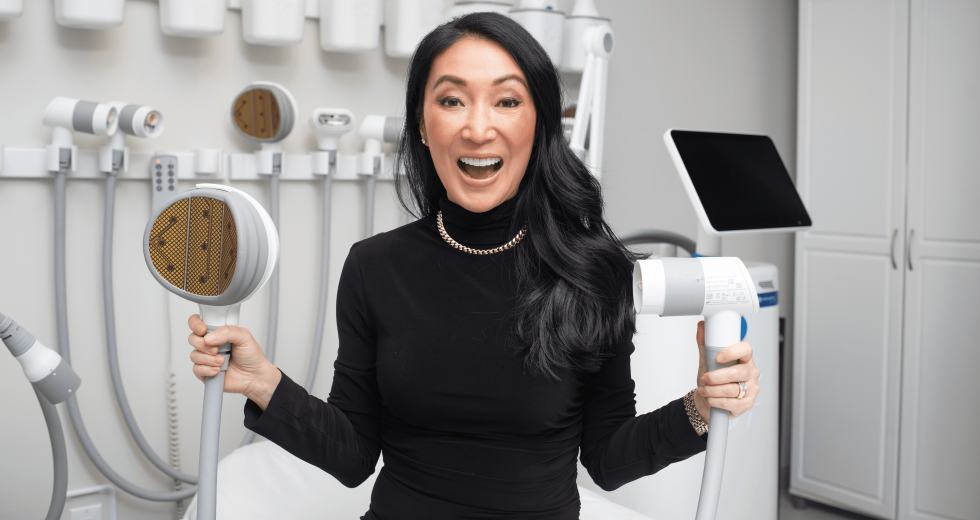When it comes to “having a little work done,” it’s all about perception.
“I was actually one of those people who thought they would never do Botox in their life,” says Shawna Chrisman, nurse practitioner and founder of Destination Aesthetics. “I just wanted to age gracefully.” But a product called Lattise — which she calls her “gateway” — changed her perspective on what that means.
“It’s a serum you put on your eyelashes to help them grow longer and thicker,” she explains. “Mine are naturally short and kind of stubby, so I tried it, and it worked just like it said it would. So I became kind of an addict! It was my segue into aesthetics.” It piqued her interest enough that she learned how to administer Botox and started doing parties on the side. She launched Destination Aesthetics in 2011, and now there are five locations across the Capital Region. “Going into it, I thought it was more about lines and wrinkles and the vanity side of things,” she shares. “But I quickly learned that’s not the case. It’s about making people feel confident and empowering them so they feel like the best version of themselves.”
Medical aesthetics focuses on enhancing the appearance through non-surgical and surgical treatments that include everything from medical grade skin care to Botox, dermal fillers, laser resurfacing, body contouring and more. It’s a billion-dollar industry in the U.S. that continues to thrive post-pandemic. Some Capital Region providers say what drives people to get nipped, tucked, injected and frozen these days is often less about chasing youth or achieving the latest beauty trend and more about forging a path to self-care.
Taking the leap
With the evolution of aesthetics, many clients are looking for something that’s quick with little to no down time and great results. And most prefer a more natural look. “Most people don’t want to look 20 if they’re 50,” says Chrisman. “They just want to slow the aging process down but still look like themselves.” Today’s options are endless, she says. Destination Aesthetics offers a range of skin care products and in-office services that are completely non-surgical and run the gamut in costs.
Making the decision to get aesthetic treatments can be a loaded process. Chrisman says it takes most people about a year to get to the point of actually making the appointment. “Both men and women battle with putting themselves first and spending money in kind of this non-discretionary way,” she says. “So when people do make that decision we like to empower them and say, ‘We’re really glad you chose yourself today.’”
As a sales professional, longtime client Carol Dahmen-Eckery understands the pressures many women face to keep up their appearance. “Coming of age in the era of supermodels, I’ve always been acutely aware that for girls and women, we are primarily judged on our looks,” says the CEO of Sacramento consulting firm CDE Strategies. The one-time competitive roller skater went on to have a career in political campaigning, followed by political advertising for Effectv (then Comcast Spotlight) before starting her own firm this year. “For me, it has never been radically altering my looks, but rather just keeping a more youthful appearance to look as young as I feel.” Taking care of herself on the inside and the outside, she says, is her number one priority.
Women continue to drive the market
Chrisman says they’re seeing a huge surge in male clients doing nonsurgical body sculpting, a noninvasive treatment to reduce body fat. But according to the 2022 Medical Spa State of the Industry Report, women are still driving the market for aesthetic services, representing 88 percent of all procedures in the U.S.
Dr. David Kaufman of The Natural Result / Center for Aesthetic
Artistry in Folsom is a former Navy SEAL who was inspired by his
college roommate’s father who performed surgeries on children
with facial deformities. He says the best part of his work is
making people happy.
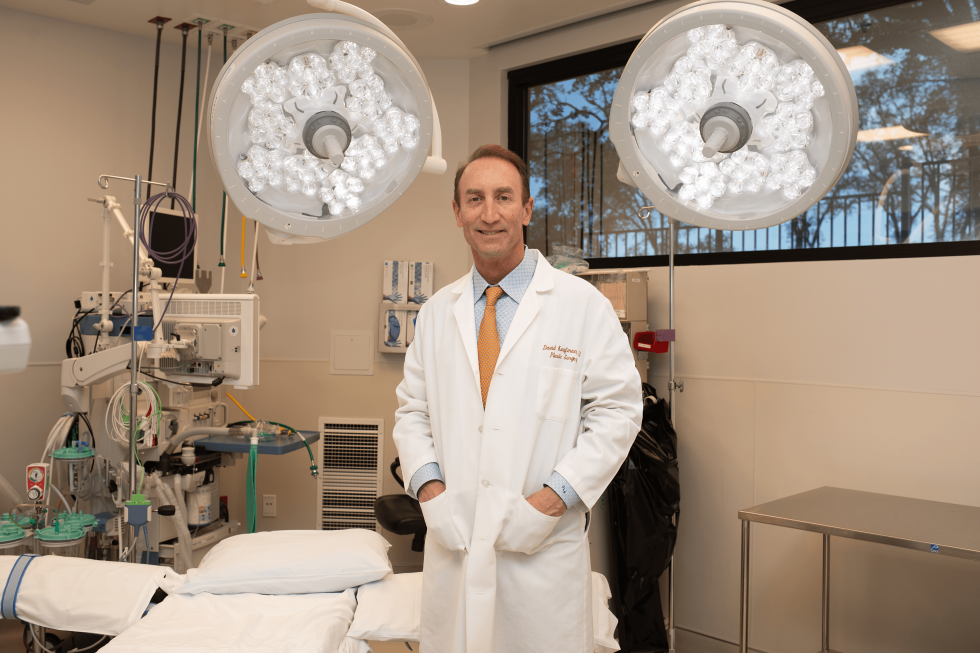
“It’s surprisingly common to see men come in for Botox, liposuction and male breast reductions,” says Dr. David Kaufman at The Natural Result / Center for Aesthetic Artistry in Folsom. “But I’d say our percentage of male clients is around 5 percent. It’s still predominantly women.”
And not just “women of a certain age.” The industry report says the number of women 18 to 34 seeking treatment has increased in the last year from 17 to 26 percent. “The young girls usually want breast enhancement or body contouring like liposuction. Larger lips are definitely still appealing, and I think Instagram really pushes that aesthetic,” says Kaufman. “I also think there’s some fear in younger women that if they don’t treat their wrinkles early, they’ll be theirs to keep. So there’s a lot of use of almost what I call preventative Botox.”
Patients interested in “mommy makeovers,” facelifts and other facial rejuvenation procedures make up a large part of his demographic. Sometimes people come in knowing exactly what they want, he says. “But more often they’ll come in saying, ‘I don’t like the way I look. I look sad, tired, sun-beaten. What can you do to make it better?’ Then we go over a series of different offerings and decide what the solutions are.”
A former Navy SEAL and veteran of the Persian Gulf War, Kaufman was motivated to go into plastic surgery as a student at Harvard Medical School. His roommate’s father was a plastic surgeon and head of the craniofacial unit at the University of Pittsburgh. “He did these amazing complicated childhood deformity cases and worked with these kids with really challenging problems, making them look almost normal,” he shares. “It was inspiring.”
Kaufman says the best part about his work is just making people happy. “I take care of a lot of massive weight loss patients, and it’s almost like a new lease on life for them,” he says. “The commonality is almost everybody who comes in here comes with an insecurity or something they don’t feel good about. In many instances we’re able to meaningfully fix that and make them feel good in their skin again, and that’s incredibly satisfying.”
Popular aesthetic services
At the lower end of the cost spectrum, that process might start with basic skin care maintenance like facials. A Diamond Glow facial, for example, is a 30-minute skin resurfacing treatment done with a special diamond-tipped wand that can run between $150 to $300 (based on the national average). But for many people, Chrisman says, Botox is their ‘entry point’ into the field.
The office of The Natural Result / Center for Aesthetic Artistry
in Folsom has more of a spa setting than a medical office, with
soothing features and colorful art. The center’s doctors do
facelifts, breast implants, body contouring and other procedures.
(Photo by Rudy Meyers Photography)
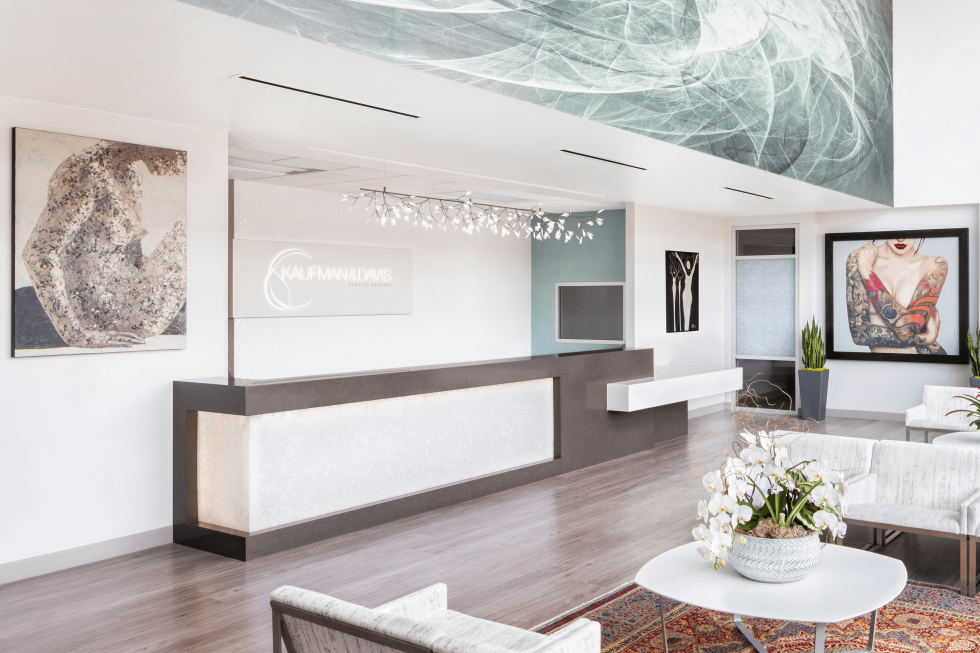
A mainstay treatment for decades now, Botox has continued to grow in its uses and popularity. Injected into the muscles and commonly used to temporarily improve crow’s-feet and other lines and wrinkles, Botox can help with everything from “gummy smiles” (also known as excessive gingival display) to platysmal bands (lines that go vertically down the neck). “You can even Botox your armpits and make them stop sweating,” says Kaufman. “There’s almost no limit to what you can do.”
Want to treat those vertical frown lines between your eyebrows (also known as “11 lines”)? One treatment could be as low as $250, says Chrisman. While it’s common for people to come in for return treatments every three to four months, twice a year is average for most clients, she shares.
Dermal fillers (also called injectables) are injected into targeted areas on the face to restore volume, eliminate lines and smooth the skin, or to plump up the lips, using a range of different substances. “There’s a really cool cosmetic injectable combination product coming down the line,” says Chrisman. “It’s a filler combined with a biostimulatory product, so you get the instant gratification of softening lines, but also the more long-term benefit of boosting your own collagen as you continue doing the treatment.”
Microneedling uses fine, sterilized needles to create thousands of “micropunctures” into the face to help induce new, healthy collagen and elastin production as the skin heals itself. There are a few different delivery methods for this that treat more specific issues, like a Vivace, a microneedling device that uses radiofrequency energy to smooth out fine lines and wrinkles and tighten skin. One treatment session can take between 20 to 35 minutes.
Body contouring, or body sculpting, is a procedure that tightens skin, reduces unwanted fat and builds muscle. One method for doing this is through a series of CoolTone treatments, an in-office procedure that works by applying magnetic impulses to targeted muscle groups to create contractions that improve tone and strength. Sessions usually last around 30 minutes and can be between $750 to $1,000 depending on the location.
“Some people do it just for strengthening their core,” says Chrisman. “We have some patients who’ve had injuries from crashes and things like that, and they go through all their chiropractic treatments, but they really need a core stabilizer. So they do CoolTone, and it really helps with that.” CoolSculpting, by comparison, works by freezing fat cells in specific areas.
Costs definitely level up when you move into the surgical side of things. “On the surgical side, I would say the expensive things like a breast augmentation might be $8,000,” says Kaufman. “Facial rejuvenation procedures — facelift, fat grafting, eyelids, laser surfacing, the whole thing, in this region could be $50,000. I know of a guy in New York City who charges $250,000 for the same thing. It’s across the board.”
It’s so emotional
Chrisman says her work is just as much about treating the emotional as the physical. “I should write a book on all the different patients I’ve treated that are non-stereotypical,” she shares. “I see all kinds of people come through here.”
The Army veteran with shrapnel scars. The girl who was kicked in the face by a horse as a child. The 70-year-old preparing to re-enter the job market who worried about competing against younger women. Mothers who have finally stopped breastfeeding after years and want to feel better about their bodies.
That’s the best part about her work, she says. “I love those situations where you can help someone put their best foot forward, enter a room with confidence and just feel good about themselves.”
Stay up to date on business in the Capital Region: Subscribe to the Comstock’s newsletter today.
Recommended For You
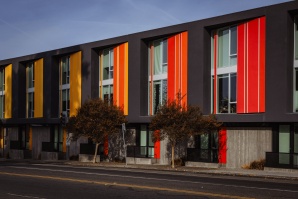
Residential Renaissance
New affordable apartment complexes offer appealing amenities such rooftop terraces, courtyards and shared community spaces
Some of the most exciting architecture being designed and built in the Capital Region today is multifamily residential. Attractive, amenity-rich condominiums, apartments and duplexes are popping up everywhere, proving that single-family luxury homes aren’t the only drool-worthy dwellings on the real estate market.

The Delta in Decline
Wildlife and businesses in the Sacramento-San Joaquin Delta are suffering from lack of fresh water
The life cycle of a salmon, so the story goes, is a heroic journey. The fish emerge from fertilized eggs in a river bed, swim to the ocean where they spend most of their lives and return to give birth in the exact place where they were born.

What’s Ahead for the Region’s Economy in 2024
Positive news, though risks abound
Those who forecast the direction of the U.S. economy have their eyes on empty office buildings. In September, two commercial real estate experts predicted that the vacant space resulting from work-from-home policies will put banks at risk and collapse tax revenues for large and mid-size cities around the country.

‘Mystery City’ Unveiled
Proposed community envisions the good ol’ days; critics call it sprawl
Sramek, 36, is founder and CEO of California Forever, which seeks to build a large new community in Solano County. While cities or large unincorporated communities have been built from scratch before in California and elsewhere, what makes this potential metropolis unusual — and has stirred public controversy — are the people behind it and its backstory.
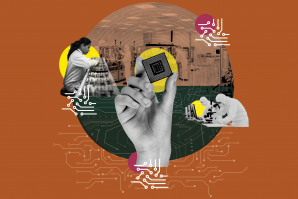
The Bosch Boom
Bosch’s acquisition of TSI Semiconductors in Roseville is expected to significantly impact the region’s economy, workforce and educational institutions
In August 2023, Bosch acquired TSI with the intention of producing silicon carbide chips, a major element in the production of electric vehicles. Bosch is betting that the global demand for silicon carbide chips will continue to grow and intends to invest $1.5 billion in the new fabrication.



